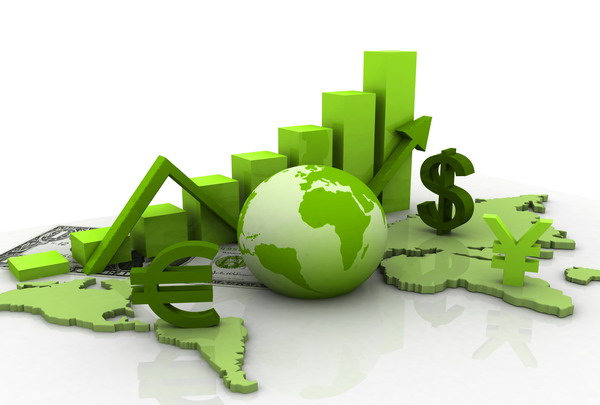Russian Invasion of Ukraine Impedes Post-Pandemic Economic Recovery in Emerging Europe and Central Asia
WASHINGTON, October 4, 2022 – The ongoing war in Ukraine has dimmed prospects of a post-pandemic economic recovery for emerging and developing economies in the Europe and Central Asia region, says the World Bank’s Economic Update for the region, released today.
Economic activity will remain deeply depressed through next year, with minimal growth of 0.3% expected in 2023, as energy price shocks continue to impact the region. So far, however, the region has weathered the storm of Russia’s invasion of Ukraine better than previously forecast. Regional output is now expected to contract by 0.2% this year, reflecting above expectation growth in some of the region’s largest economies and the prudent extension of pandemic-era stimulus programs by some governments.
Ukraine’s economy is now projected to contract by 35% this year although economic activity is scarred by the destruction of productive capacity, damage to agricultural land, and reduced labor supply as more than 14 million people are estimated to have been displaced. According to recent World Bank estimates, recovery and reconstruction needs across social, productive, and infrastructure sectors total at least $349 billion, which is more than 1.5 times the size of Ukraine’s pre-war economy in 2021.
Read also
“Russia’s invasion of Ukraine has triggered one of the biggest human displacement crises and exacted a heavy toll on human and economic life,” said Anna Bjerde, World Bank Vice President for the Europe and Central Asia region. “Ukraine continues to need enormous financial support as the war needlessly rages on as well as for recovery and reconstruction projects that could be quickly initiated.”
The global economy continues to be weakened by the war through significant disruptions in trade and food and fuel price shocks, all of which are contributing to high inflation and subsequent tightening in global financing conditions. Activity in the euro area, the largest economic partner for emerging and developing economies (EMDEs) of Europe and Central Asia, has deteriorated markedly in the second half of 2022, due to distressed supply chains, increased financial strains and declines in consumer and business confidence. The most damaging effects of the invasion, however, are surging energy prices amid large reductions in Russian energy supply.
Downgrades to growth forecasts for 2023 are broad-based across EMDEs in Europe and Central Asia as the regional outlook is subject to considerable uncertainty. Prolonged or intensified war could cause significantly larger economic and environmental damage and greater potential for fragmentation of international trade and investment. The risk of financial stress also remains elevated, given high debt levels and inflation.
A supplement to the report examines the impact of the energy crisis. While global prices for oil, gas and coal have been rising since early 2021, they skyrocketed after Russia’s invasion of Ukraine, sending inflation to levels not seen for decades in the region. This unprecedented crisis has implications for consumers and Governments alike – constraining fiscal affordability; firm productivity; and household welfare.
Hardest hit will be countries with medium to high reliance on natural gas imports for heating (which accounts for 30% of energy demand), industry, or electricity, as well as countries closely connected with EU energy markets. These countries must prepare for gas shortages and put in place emergency plans to mitigate the worst impacts on households and firms, including saving energy, boosting energy efficiency, and implementing quota/rationing plans. Behavior change campaigns that focus on heating efficiency in homes and buildings, such as resealing windows and adding insulation, require relatively minimal investment and have immediate impacts.
“The overlapping crises of the war in Ukraine, the ongoing pandemic and the surge in food and fuel prices are painful reminders that governments need to be prepared to manage massive, unexpected shocks that unravel very quickly,” said Ms. Bjerde. “Social protection systems, which are the bedrock of anti-poverty efforts, need to be modernized to make them effective in the face of shocks as well as longer-term challenges.”
The report also includes a special focus on the region’s social protection systems, which have played a critical role in supporting households and businesses during the pandemic and, more recently, from the fallout of the war in Ukraine.
The region’s pandemic response comprised two broad types of policy instruments: income protection measures and job protection measures. The report assesses the effectiveness of these measures in promoting economic growth, reducing poverty, and preserving jobs. It finds that, in the short run, higher spending on job protection measures was associated with higher employment and less poverty. However, the effect of these measures on growth is less clear.
These lessons from the pandemic are instructive for policymakers in making social protections systems adaptive and inclusive to effectively address both short-term shocks to the economy, and the longer term trends which are transforming labor markets, including globalization, demographic trends, technological innovation, and the impacts of climate change and climate action.
Policy interventions to building social protection systems for the future can include a combination of (i) guaranteed minimum income support designed to protect individuals and households from adverse shocks, (ii) regulatory reforms that gradually remove restrictions on firms’ hiring and dismissal practices, and ultimately support the creation of formal jobs in the private sector and a reduction in informality; (iii) enhanced coverage of and protection for vulnerable groups; and (iv) digitalization for improved quality and quantity of services provision.
Key Messages: Economic Outlook
Regional Developments & Outlook
Russia’s invasion of Ukraine has triggered the largest human displacement crisis in the world since World War II—adding to already historically high global refugee levels. The invasion has also sharply accelerated the deceleration in global economic activity, with the global economy at risk of slipping into a recession in 2023 as major economies continue to slow sharply.
Output in emerging and developing economies (EMDEs) in Europe and Central Asia (ECA) is forecast to contract by 0.2 percent in 2022, reflecting negative spillovers caused by the war. Growth is projected to barely return in 2023, as GDP is set to expand at 0.3 percent.
Growth projections for 2023 have been downgraded for most countries in the region as each country is affected by disrupted supply chains, weakening growth prospects in the euro area, tighter-than-anticipated monetary policy, and severe commodity market shocks and broad uncertainty caused by the war.
The forecast is also predicated on commodity prices moderating (but remaining at high levels), as well as a global environment characterized by tighter global financing conditions, softening external demand, and easing supply chain bottlenecks. If the war escalates such that Russian energy exports are further disrupted, regional output could be far weaker. A protracted war is likely to further heighten policy uncertainty and fragment regional trade and investment integration.
Sub-Regional and Country Outlook
Ukraine
One-third of Ukraine’s population of 44 million people is estimated to be displaced due to Russia’s invasion of the country. GDP is projected to contract by about 35 percent in 2022, and according to recent World Bank estimates, recovery and reconstruction needs across social, productive, and infrastructure sectors total at least $349 billion, which is more than 1.5 times the size of Ukraine’s pre-war economy in 2021.
The repercussions of the war are expected to reverberate beyond the short term, with economic activity scarred by the destruction of productive capacity, damage to arable land, and reduced labor supply. Wars inflict particularly severe damage to productivity for several years, through reducing and disrupting the labor force, weakening capital deepening, disrupting value chains, hindering innovation, and inducing poverty.
Russia
Russia’s economy weathered the initial storm of international sanctions better than expected, due to a combination of rapidly enacted and extensive capital controls and liquidity operations, and fiscal support to households, firms, and subnational governments.
Nonetheless, the Russian economy is expected to contract by 4.5 percent in 2022, as falling real wages erode consumption, while sanctions and voluntary withdrawals by foreign businesses and intense uncertainty weigh on investment. In 2023, given the continued war and proliferating sanctions, Russia’s economy is expected to again decline, by 3.6 percent, as earlier delays in EU oil embargos are fully implemented and all drivers of growth weaken.
Türkiye
Positive economic activity in Türkiye continues despite drags from multi-decade high inflation, significant currency depreciation, and swelling external liabilities. Headline inflation accelerated to over 80 percent in August—the fastest pace since 1998—after energy prices continued to soar and a further two cuts in the key policy rate in August and September drove the lira to new lows. Policy rate cuts have deepened Türkiye’s macroeconomic imbalances as real interest rates continue to be pushed further into negative territory, leaving the economy vulnerable to financial stability risks.
Despite these headwinds, growth is projected to reach 4.7 percent 2022—2.4 percentage points above June 2022 projections—as strong domestic demand and robust export growth fueled stronger-than-expected output in the first half of 2022, during which the economy grew by 7.5 percent. Private consumption spending grew on rising inflation expectations and multiple, large minimum wage hikes in 2022 that partly helped to offset cost-of-living shocks. The rebound in international tourist arrivals has been larger than expected, bolstering export growth and partially replenishing foreign exchange reserves.
In 2023, growth is projected to moderate, to 2.7 percent, as government spending counteracts headwinds posed by macro-financial volatility, elevated prices, and diminished domestic demand amid subdued investment.
Central Asia
Growth in Central Asia is projected at a better-than-expected 3.7 percent in 2022, as higher global commodity prices helped to buoy economic activity and fiscal balances in some Central Asian economies (Kazakhstan and Uzbekistan). Kazakhstan is expected to grow by 3 percent in 2022, the Kyrgyz Republic is forecast to grow 4 percent in the same year, while Tajikistan and Uzbekistan are expected to grow in 2022 by 4.2 percent and 5.3 percent, respectively. Activity in Central Asia has also benefited from better external demand than envisioned, reflecting a shallower-than-expected recession in Russia. Although output in the Kyrgyz Republic and Tajikistan is expected to substantially exceed the June 2022 projections—owing to stronger-than-expected remittances from Russia—renewed border tensions between the two countries pose considerable downside risks.
Growth is expected to increase moderately to 3.9 percent in 2023 and further to 4.3 percent in 2024, with downside risks largely emanating from a deeper contraction in Russia. Forecasts for 2023 indicate that Kazakhstan is expected to grow by 3.5 percent, the Kyrgyz Republic by 4 percent, Tajikistan by 4.8 percent and Uzbekistan by 4.9 percent.
Central Europe
Central Europe is projected grow at 4.3 percent in 2022—stronger than previously projected due to upside surprises in the first half of 2022, mirroring relatively robust external demand from the euro area and the release of pent-up demand as pandemic restrictions were lifted in early 2022. Despite accelerating inflation, private consumption benefitted from lower unemployment and increased wages driven by labor shortages. In 2022 Bulgaria is expected to grow by 2.9 percent, Croatia is forecast to grow by 6.4 percent, Hungary is forecast to grow by 4.7 percent, while Poland and Romania are expected to grow by 4 percent and 4.6 percent, respectively.
Industrial activity and consumption will likely be weakened in the fourth quarter of 2022, however, as energy prices continue to climb amidst Russia’s decision to stop Nord Stream 1 gas flows. Gas and electricity subsidies have helped to shield households but are expected to exacerbate fiscal pressures and widen deficits (Bulgaria, Croatia, Romania). Headline inflation, which was already at multi-year highs and exceeding targets prior to the invasion of Ukraine, is likely to remain elevated amid high energy costs from the war and as core inflation remains persistently high due to earlier wage increases. In response, central banks may be forced to tighten monetary policy further despite the dampening effects on growth.
Growth in 2023 is expected to decelerate sharply to 1.9 percent, as high inflation and energy prices dampen household and firm activity and prompt tighter monetary policy. The slowdown in activity in Central Europe is expected to be exacerbated by weakening external demand, particularly from the euro area. Forecasts for 2023 indicate that Bulgaria is expected to grow by 1.7 percent, Croatia by 1.8 percent, Hungary by 1.7 percent, Poland by 1.6 percent, and Romania by 3.2 percent.
Eastern Europe (excluding Ukraine)
Eastern Europe excluding Ukraine is forecast to contract by 5.4 percent in 2022, as spillovers from the war in Ukraine continue to significantly inhibit economic activity in the subregion. Output in 2022 is forecast to contract 6.2 percent in Belarus and 0.7 percent in Moldova—the only two economies expected to shrink outside of Russia and Ukraine. Surging inflation, higher borrowing costs, lower remittances (Moldova), and additional sanctions (Belarus) are expected to weigh on domestic demand.
Belarus is expected to contract by 2.3 percent in 2023 and Moldova is forecast to grow by 2.6 percent in the same year. The forecast is subject to significant downsides risks derived from uncertainty surrounding energy supplies for the upcoming winter. In addition to worsening energy security, unfavorable weather conditions could also reduce agricultural yields in the region, further exacerbating inflationary pressures and food insecurity, particularly for vulnerable households. Over the long-term, growth prospects could materially weaken if the fractures in trade and investment become permanent.
South Caucasus
In the South Caucasus, output is projected to grow by 5.6 percent in 2022—the fastest among the ECA subregions. The improvement reflects better-than-expected growth, with activity supported by high energy prices and fiscal support in Azerbaijan, as well as robust domestic demand in all three economies (Armenia, Azerbaijan, and Georgia) in the first half of the year. Armenia is expected to grow 7 percent in 2022, while Azerbaijan and Georgia are expected to grow in 2022 by 4.2 percent and 8.8 percent, respectively. The easing of COVID-19 restrictions, as well as a surge in money transfers from Russia, have fueled the pick-up in domestic demand and subsequently inflation. Inflation has also increased alongside high prices for imports, food, and fuel.
Growth in 2023 is anticipated to decelerate sharply to 3.3 percent—well below the rate of potential growth for most of these economies. Armenia is forecast to grow by 4.3 percent in 2023, Azerbaijan is expected to grow by 2.8 percent in 2023 and Georgia is expected to grow 4.2 percent in the same year. The deceleration reflects weakening momentum after a strong rebound in 2022, the slowdown in the European Union, and a sharper-than-expected contraction of 2023 output in Russia—one of the South Caucasus’s closest economic partners—as delayed sanctions related to the EU oil embargo take full effect and energy supplies are further disrupted.
Western Balkans
In the Western Balkans, output is forecast grow 3 percent in 2022—the slowest pace among the ECA subregions outside Eastern Europe and slightly weaker than potential growth, despite robust exports and tourism. In 2022 Albania is expected to grow by 3.2 percent, Bosnia and Herzegovina by 2 percent, Kosovo by 3.1 percent, Montenegro by 6.9 percent, North Macedonia by 2.1 percent, and Serbia by 3.2 percent. Growth is projected to remain at an average of 2.9 percent over the forecast horizon, as EU accession reforms and investment mitigate the negative impacts imposed by higher energy and food prices, disruptions to trade and investment flows, and spillovers from the slowdown in euro area activity.
The disruption of natural gas flows to the region, which relies on Russia for 67 percent of its natural gas imports, has increased energy prices and amplified pressures for higher electricity subsidies (Albania, North Macedonia, and Kosovo). Forecasts for 2023 indicate Albania is expected to grow by 2.3 percent, Bosnia and Herzegovina by 2.8 percent, Kosovo by 3.7 percent, Montenegro by 3.4 percent, North Macedonia by 2.7 percent, and Serbia by 2.7 percent.
Tightening global financing conditions have constrained the availability of external financing to the region. Increasing borrowing costs, as well as food and energy price controls (Bosnia and Herzegovina and Serbia), have added upward pressure on public debt and its servicing costs, which had already risen sharply following extraordinary pandemic-related government support in 2020.
























































